Kam Woh Ng
Chirpy3D: Continuous Part Latents for Creative 3D Bird Generation
Jan 07, 2025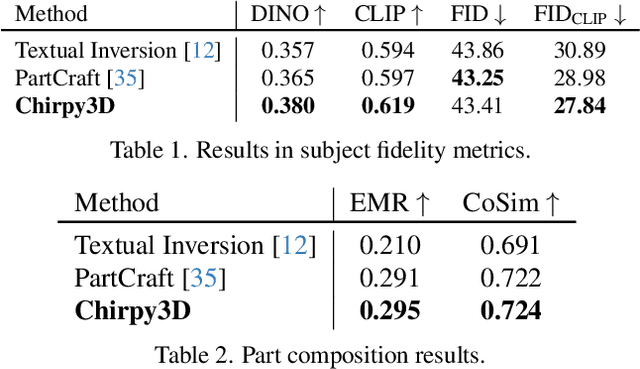
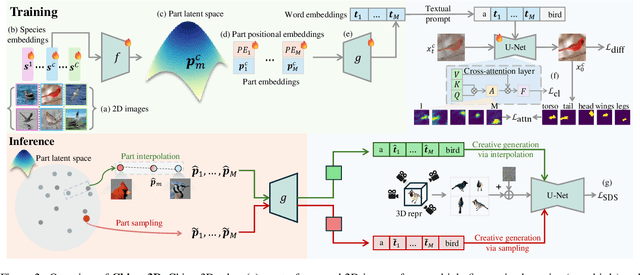
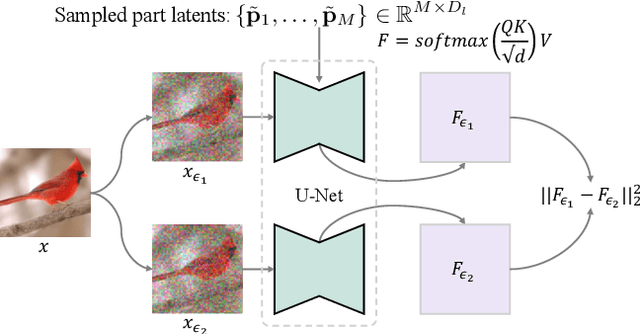

Abstract:In this paper, we push the boundaries of fine-grained 3D generation into truly creative territory. Current methods either lack intricate details or simply mimic existing objects -- we enable both. By lifting 2D fine-grained understanding into 3D through multi-view diffusion and modeling part latents as continuous distributions, we unlock the ability to generate entirely new, yet plausible parts through interpolation and sampling. A self-supervised feature consistency loss further ensures stable generation of these unseen parts. The result is the first system capable of creating novel 3D objects with species-specific details that transcend existing examples. While we demonstrate our approach on birds, the underlying framework extends beyond things that can chirp! Code will be released at https://github.com/kamwoh/chirpy3d.
Learning Flow Fields in Attention for Controllable Person Image Generation
Dec 12, 2024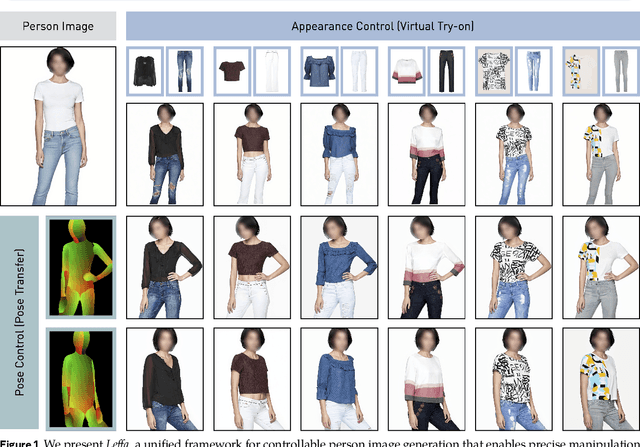
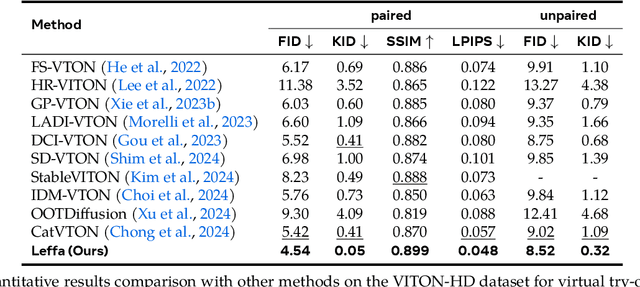
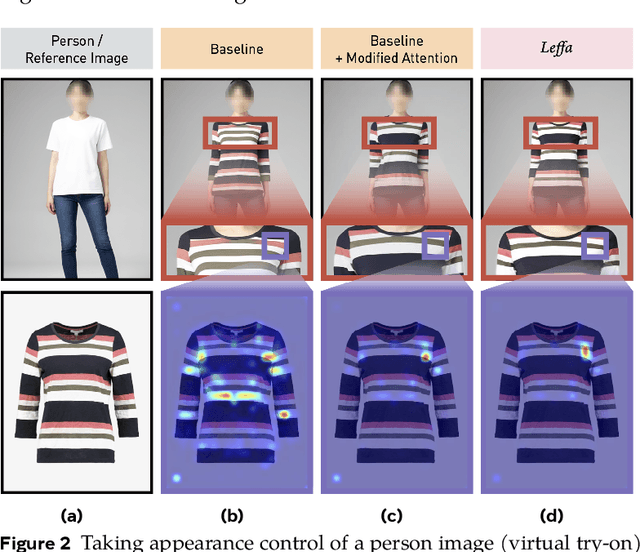

Abstract:Controllable person image generation aims to generate a person image conditioned on reference images, allowing precise control over the person's appearance or pose. However, prior methods often distort fine-grained textural details from the reference image, despite achieving high overall image quality. We attribute these distortions to inadequate attention to corresponding regions in the reference image. To address this, we thereby propose learning flow fields in attention (Leffa), which explicitly guides the target query to attend to the correct reference key in the attention layer during training. Specifically, it is realized via a regularization loss on top of the attention map within a diffusion-based baseline. Our extensive experiments show that Leffa achieves state-of-the-art performance in controlling appearance (virtual try-on) and pose (pose transfer), significantly reducing fine-grained detail distortion while maintaining high image quality. Additionally, we show that our loss is model-agnostic and can be used to improve the performance of other diffusion models.
PartCraft: Crafting Creative Objects by Parts
Jul 05, 2024



Abstract:This paper propels creative control in generative visual AI by allowing users to "select". Departing from traditional text or sketch-based methods, we for the first time allow users to choose visual concepts by parts for their creative endeavors. The outcome is fine-grained generation that precisely captures selected visual concepts, ensuring a holistically faithful and plausible result. To achieve this, we first parse objects into parts through unsupervised feature clustering. Then, we encode parts into text tokens and introduce an entropy-based normalized attention loss that operates on them. This loss design enables our model to learn generic prior topology knowledge about object's part composition, and further generalize to novel part compositions to ensure the generation looks holistically faithful. Lastly, we employ a bottleneck encoder to project the part tokens. This not only enhances fidelity but also accelerates learning, by leveraging shared knowledge and facilitating information exchange among instances. Visual results in the paper and supplementary material showcase the compelling power of PartCraft in crafting highly customized, innovative creations, exemplified by the "charming" and creative birds. Code is released at https://github.com/kamwoh/partcraft.
ConceptHash: Interpretable Fine-Grained Hashing via Concept Discovery
Jun 12, 2024
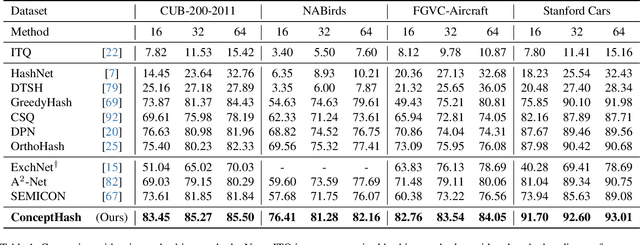
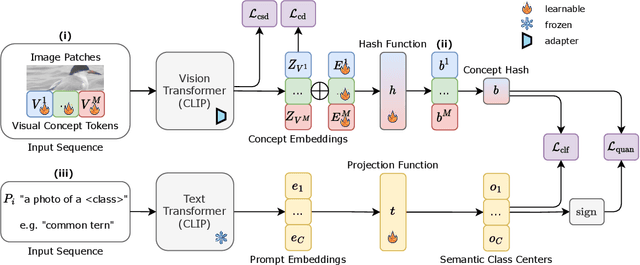

Abstract:Existing fine-grained hashing methods typically lack code interpretability as they compute hash code bits holistically using both global and local features. To address this limitation, we propose ConceptHash, a novel method that achieves sub-code level interpretability. In ConceptHash, each sub-code corresponds to a human-understandable concept, such as an object part, and these concepts are automatically discovered without human annotations. Specifically, we leverage a Vision Transformer architecture and introduce concept tokens as visual prompts, along with image patch tokens as model inputs. Each concept is then mapped to a specific sub-code at the model output, providing natural sub-code interpretability. To capture subtle visual differences among highly similar sub-categories (e.g., bird species), we incorporate language guidance to ensure that the learned hash codes are distinguishable within fine-grained object classes while maintaining semantic alignment. This approach allows us to develop hash codes that exhibit similarity within families of species while remaining distinct from species in other families. Extensive experiments on four fine-grained image retrieval benchmarks demonstrate that ConceptHash outperforms previous methods by a significant margin, offering unique sub-code interpretability as an additional benefit. Code at: https://github.com/kamwoh/concepthash.
IPR-NeRF: Ownership Verification meets Neural Radiance Field
Jan 23, 2024Abstract:Neural Radiance Field (NeRF) models have gained significant attention in the computer vision community in the recent past with state-of-the-art visual quality and produced impressive demonstrations. Since then, technopreneurs have sought to leverage NeRF models into a profitable business. Therefore, NeRF models make it worth the risk of plagiarizers illegally copying, re-distributing, or misusing those models. This paper proposes a comprehensive intellectual property (IP) protection framework for the NeRF model in both black-box and white-box settings, namely IPR-NeRF. In the black-box setting, a diffusion-based solution is introduced to embed and extract the watermark via a two-stage optimization process. In the white-box setting, a designated digital signature is embedded into the weights of the NeRF model by adopting the sign loss objective. Our extensive experiments demonstrate that not only does our approach maintain the fidelity (\ie, the rendering quality) of IPR-NeRF models, but it is also robust against both ambiguity and removal attacks compared to prior arts.
DreamCreature: Crafting Photorealistic Virtual Creatures from Imagination
Nov 27, 2023Abstract:Recent text-to-image (T2I) generative models allow for high-quality synthesis following either text instructions or visual examples. Despite their capabilities, these models face limitations in creating new, detailed creatures within specific categories (e.g., virtual dog or bird species), which are valuable in digital asset creation and biodiversity analysis. To bridge this gap, we introduce a novel task, Virtual Creatures Generation: Given a set of unlabeled images of the target concepts (e.g., 200 bird species), we aim to train a T2I model capable of creating new, hybrid concepts within diverse backgrounds and contexts. We propose a new method called DreamCreature, which identifies and extracts the underlying sub-concepts (e.g., body parts of a specific species) in an unsupervised manner. The T2I thus adapts to generate novel concepts (e.g., new bird species) with faithful structures and photorealistic appearance by seamlessly and flexibly composing learned sub-concepts. To enhance sub-concept fidelity and disentanglement, we extend the textual inversion technique by incorporating an additional projector and tailored attention loss regularization. Extensive experiments on two fine-grained image benchmarks demonstrate the superiority of DreamCreature over prior methods in both qualitative and quantitative evaluation. Ultimately, the learned sub-concepts facilitate diverse creative applications, including innovative consumer product designs and nuanced property modifications.
Unsupervised Hashing via Similarity Distribution Calibration
Feb 15, 2023Abstract:Existing unsupervised hashing methods typically adopt a feature similarity preservation paradigm. As a result, they overlook the intrinsic similarity capacity discrepancy between the continuous feature and discrete hash code spaces. Specifically, since the feature similarity distribution is intrinsically biased (e.g., moderately positive similarity scores on negative pairs), the hash code similarities of positive and negative pairs often become inseparable (i.e., the similarity collapse problem). To solve this problem, in this paper a novel Similarity Distribution Calibration (SDC) method is introduced. Instead of matching individual pairwise similarity scores, SDC aligns the hash code similarity distribution towards a calibration distribution (e.g., beta distribution) with sufficient spread across the entire similarity capacity/range, to alleviate the similarity collapse problem. Extensive experiments show that our SDC outperforms the state-of-the-art alternatives on both coarse category-level and instance-level image retrieval tasks, often by a large margin. Code is available at https://github.com/kamwoh/sdc.
Large-Scale Product Retrieval with Weakly Supervised Representation Learning
Aug 01, 2022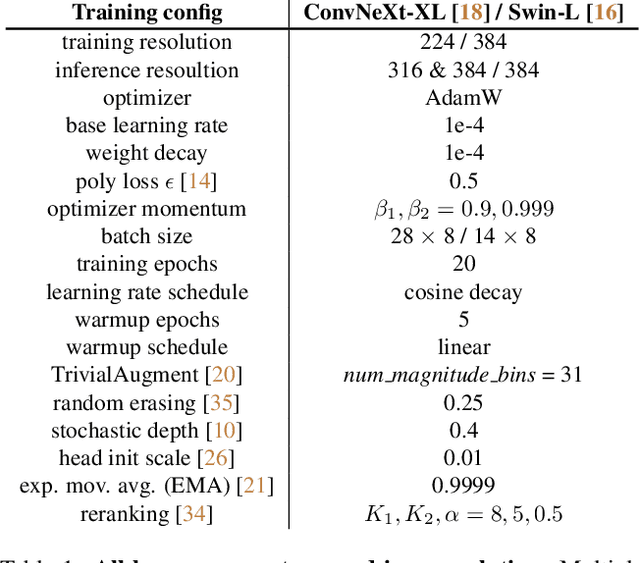
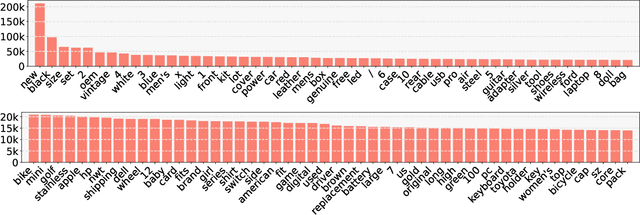

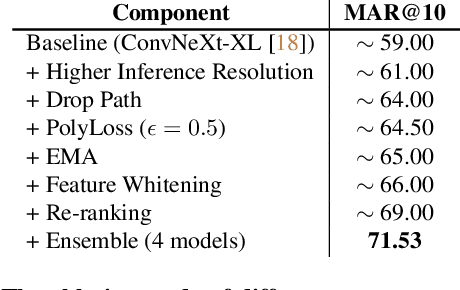
Abstract:Large-scale weakly supervised product retrieval is a practically useful yet computationally challenging problem. This paper introduces a novel solution for the eBay Visual Search Challenge (eProduct) held at the Ninth Workshop on Fine-Grained Visual Categorisation workshop (FGVC9) of CVPR 2022. This competition presents two challenges: (a) E-commerce is a drastically fine-grained domain including many products with subtle visual differences; (b) A lacking of target instance-level labels for model training, with only coarse category labels and product titles available. To overcome these obstacles, we formulate a strong solution by a set of dedicated designs: (a) Instead of using text training data directly, we mine thousands of pseudo-attributes from product titles and use them as the ground truths for multi-label classification. (b) We incorporate several strong backbones with advanced training recipes for more discriminative representation learning. (c) We further introduce a number of post-processing techniques including whitening, re-ranking and model ensemble for retrieval enhancement. By achieving 71.53% MAR, our solution "Involution King" achieves the second position on the leaderboard.
One Loss for All: Deep Hashing with a Single Cosine Similarity based Learning Objective
Sep 29, 2021
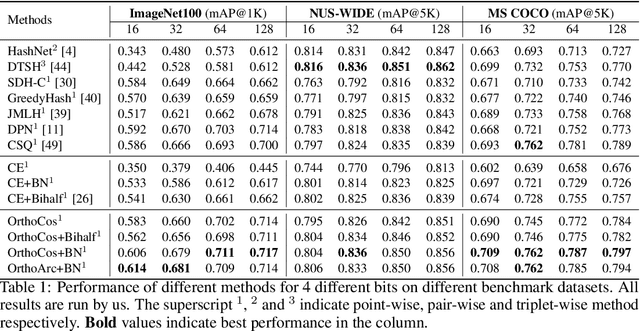

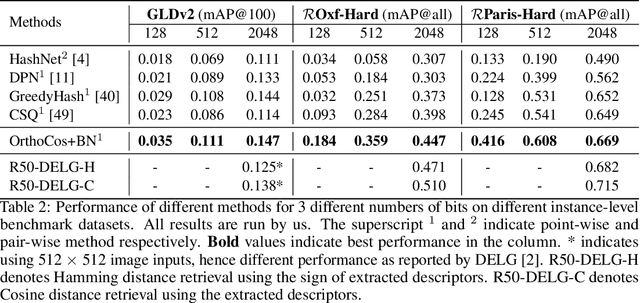
Abstract:A deep hashing model typically has two main learning objectives: to make the learned binary hash codes discriminative and to minimize a quantization error. With further constraints such as bit balance and code orthogonality, it is not uncommon for existing models to employ a large number (>4) of losses. This leads to difficulties in model training and subsequently impedes their effectiveness. In this work, we propose a novel deep hashing model with only a single learning objective. Specifically, we show that maximizing the cosine similarity between the continuous codes and their corresponding binary orthogonal codes can ensure both hash code discriminativeness and quantization error minimization. Further, with this learning objective, code balancing can be achieved by simply using a Batch Normalization (BN) layer and multi-label classification is also straightforward with label smoothing. The result is an one-loss deep hashing model that removes all the hassles of tuning the weights of various losses. Importantly, extensive experiments show that our model is highly effective, outperforming the state-of-the-art multi-loss hashing models on three large-scale instance retrieval benchmarks, often by significant margins. Code is available at https://github.com/kamwoh/orthohash
Ternary Hashing
Mar 19, 2021
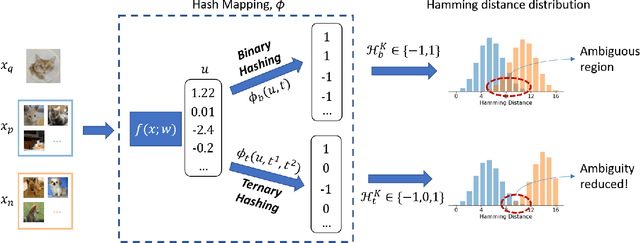


Abstract:This paper proposes a novel ternary hash encoding for learning to hash methods, which provides a principled more efficient coding scheme with performances better than those of the state-of-the-art binary hashing counterparts. Two kinds of axiomatic ternary logic, Kleene logic and {\L}ukasiewicz logic are adopted to calculate the Ternary Hamming Distance (THD) for both the learning/encoding and testing/querying phases. Our work demonstrates that, with an efficient implementation of ternary logic on standard binary machines, the proposed ternary hashing is compared favorably to the binary hashing methods with consistent improvements of retrieval mean average precision (mAP) ranging from 1\% to 5.9\% as shown in CIFAR10, NUS-WIDE and ImageNet100 datasets.
 Add to Chrome
Add to Chrome Add to Firefox
Add to Firefox Add to Edge
Add to Edge